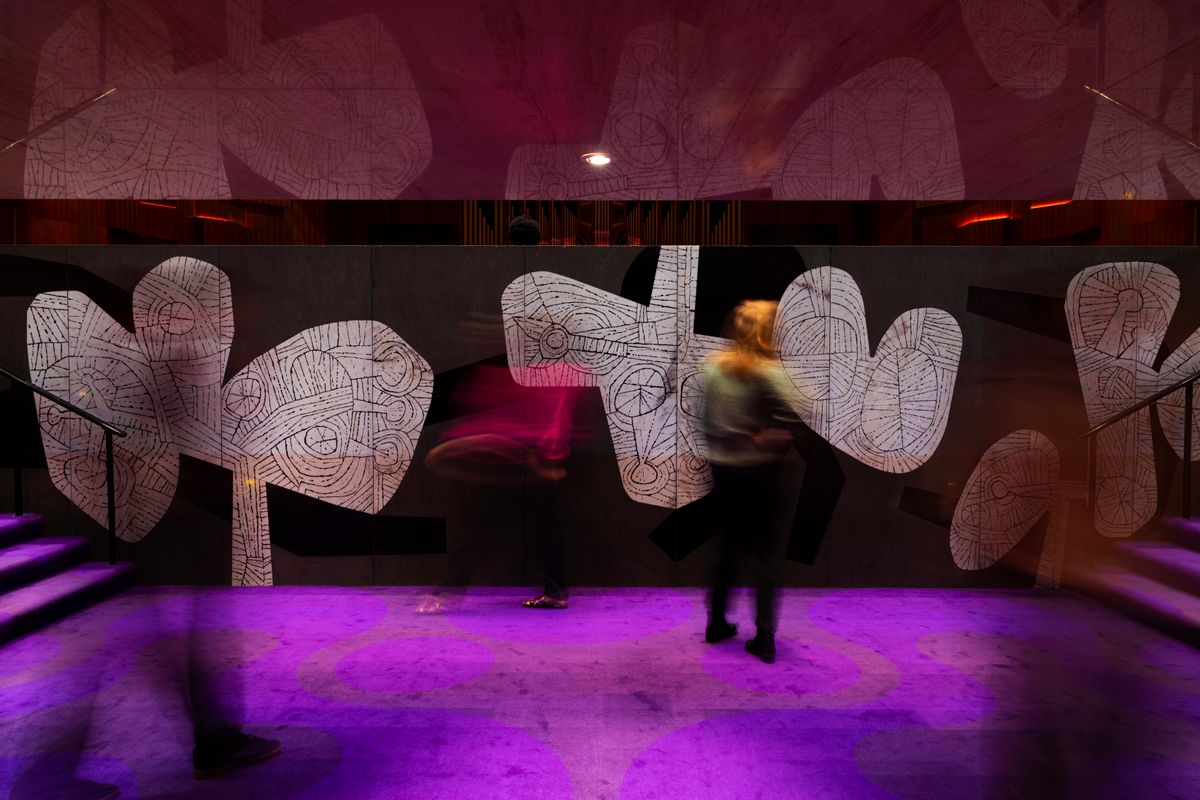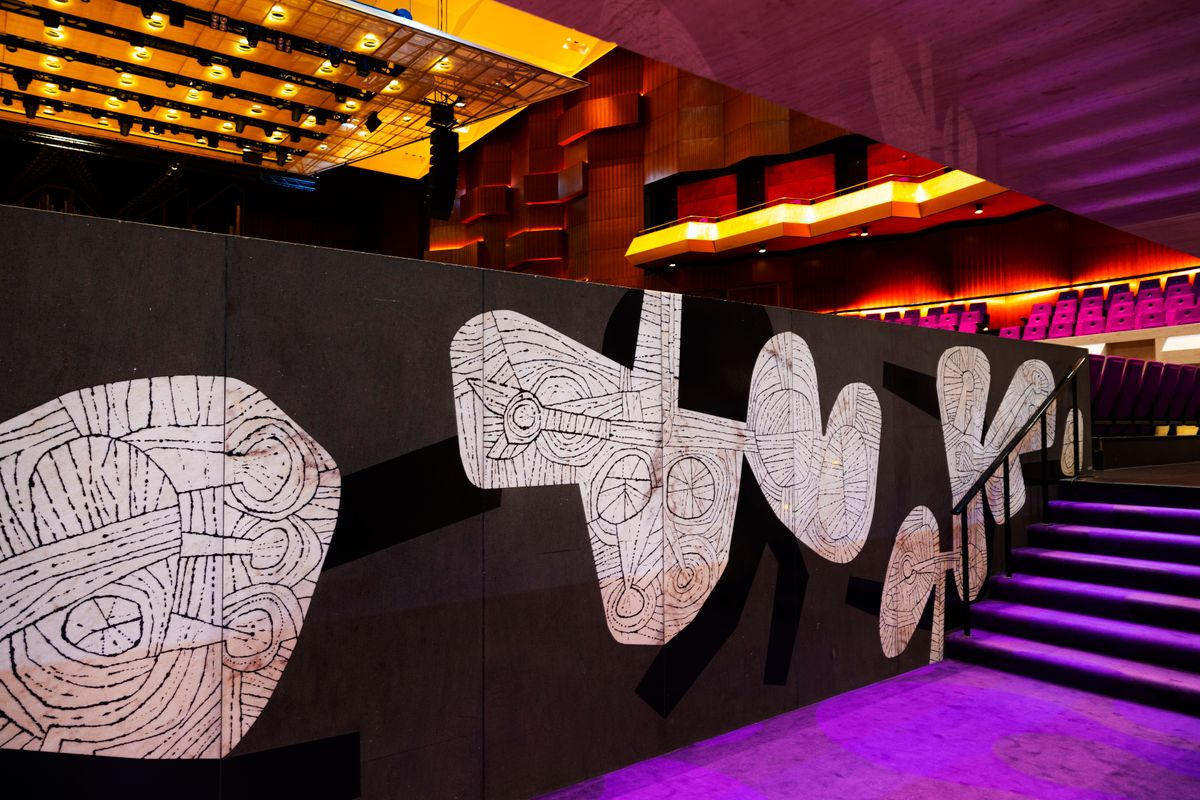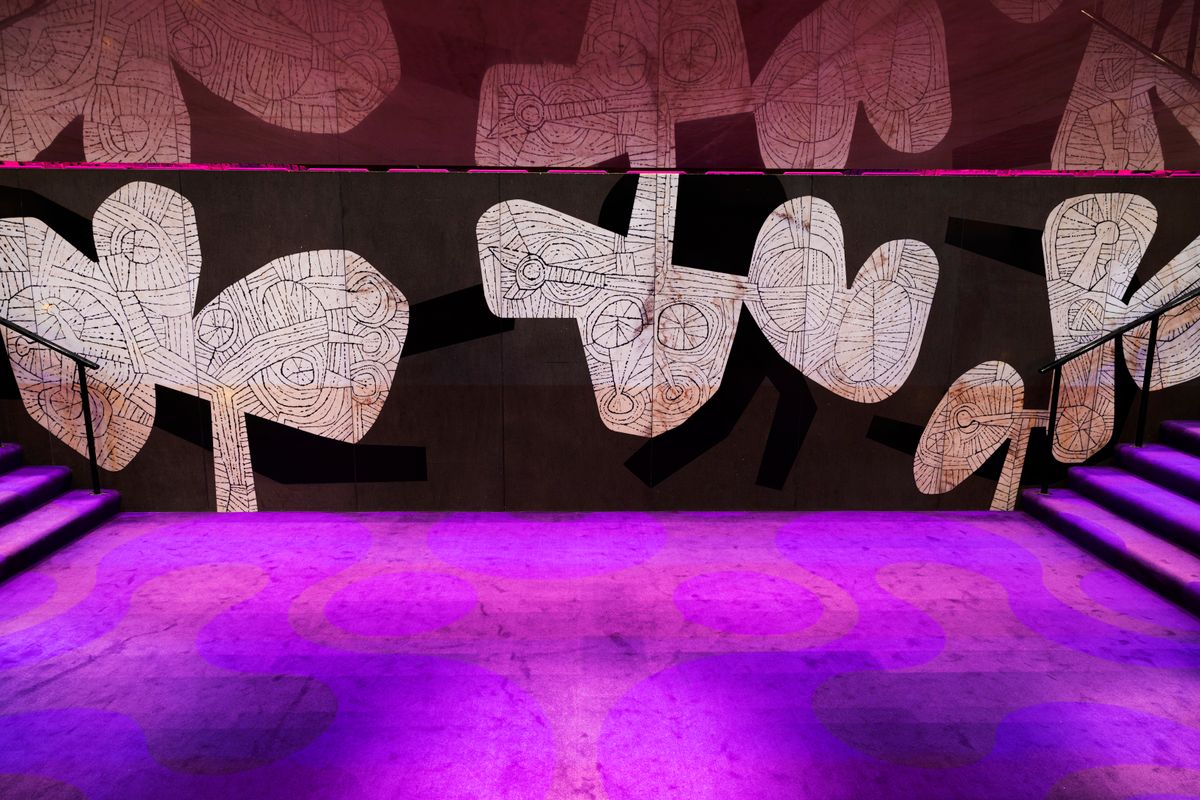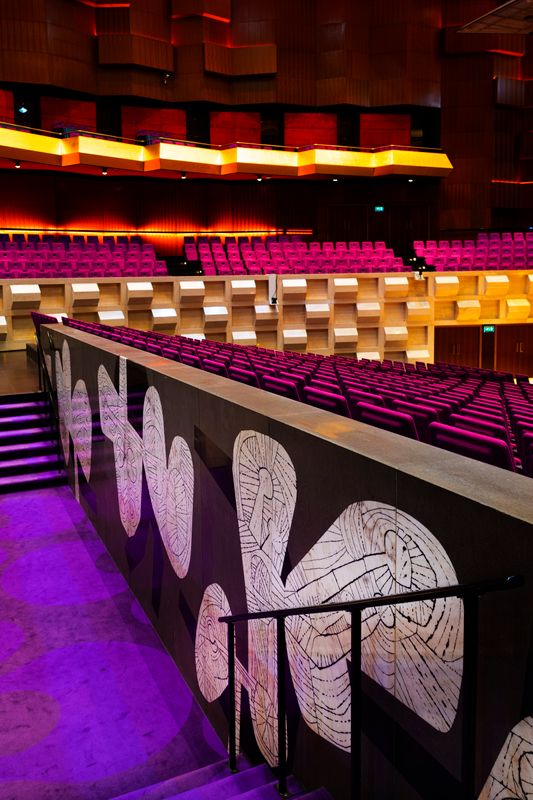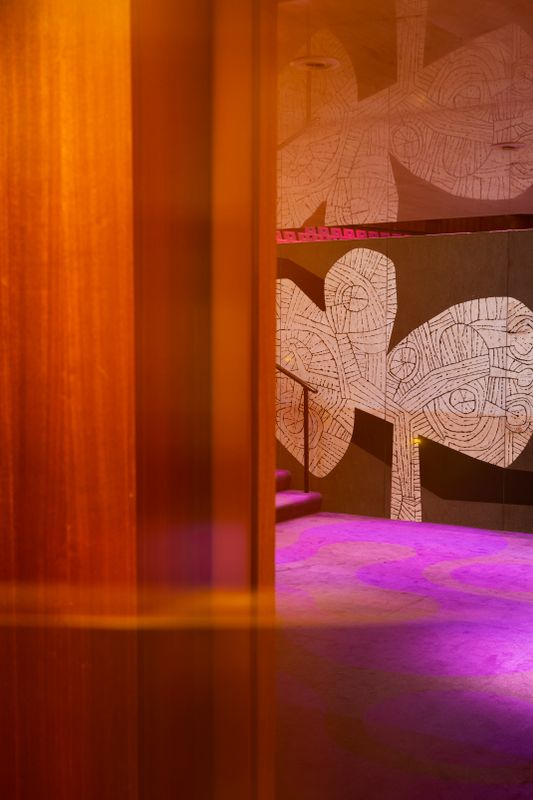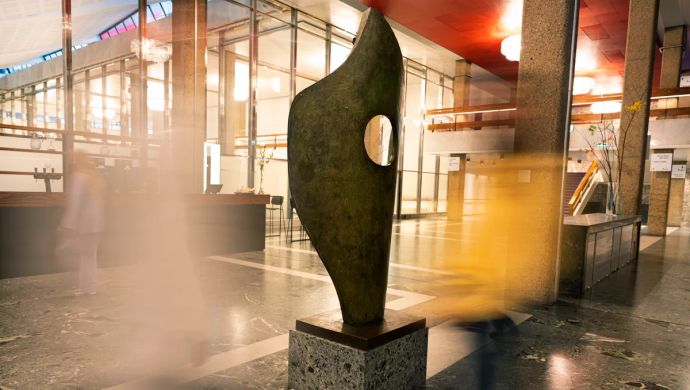Bauke Ylstra | Marmer-intarsia
Artist: Bouke Ylstra (1933-2009)
Artwork: Marble Intarsia (1965)
Collection: Rotterdam municipal collection
Acquisition: Doelen percentage scheme for art
Draughtsman and graphic artist Bouke Ylstra had not yet hit thirty when he was asked by de Doelen to decorate a wall in the Grote Zaal. His drawings were described as wild, nervous, and adventurous, yet formidable. Later in his career he would turn his hand to monumental art. He had previously experimented with sandblasted glass windows and mosaics, but it wasn’t until the early 1960s that he started to develop proficiency in marble intarsia: drawings chiseled into marble and then inlaid with composite material. The marble slabs are then polished to a smooth surface. Ylstra applied the same technique on the municipal printing works in the Bredestraat (1963) and the Stadhuis metro station (1965). The 'natural stone wall' in de Grote Zaal of de Doelen is often considered his best work using the technique, however. The white marble and the two types of natural stone Ylstra got to work with were of high quality, which has ensured the intarsia’s powerful appearance to this day.
The artist referred to himself as an ‘anti-image maker’. He refused to think of himself as a monumental sculptor or as a representative of whatever style was in vogue at the time. He was a draughtsman first and foremost: “I draw, as drawing is the mother of all arts” he stated in a daily paper. The wall he designed for de Doelen was just what the architects requested: a good and contemporary work of art, perfectly integrated into the building’s architecture. The gloss and playful style are juxtaposed with the hall’s businesslike architecture. The result is enchanting, with the artwork welcoming visitors into de Grote Zaal. If you look closely, you will notice a certain musical quality to the wall – it’s as if trees, plants and animals are making music. On the far right, a conductor seems to even emerge from the spectacle. The artwork may well be called a highlight of post-war reconstruction art. As such, the work was listed in the 2013 anthology compiled by the Cultural Heritage Agency of the Netherlands: Experiment in opdracht. Kunst van de wederopbouw. Nederland 1940-1965


